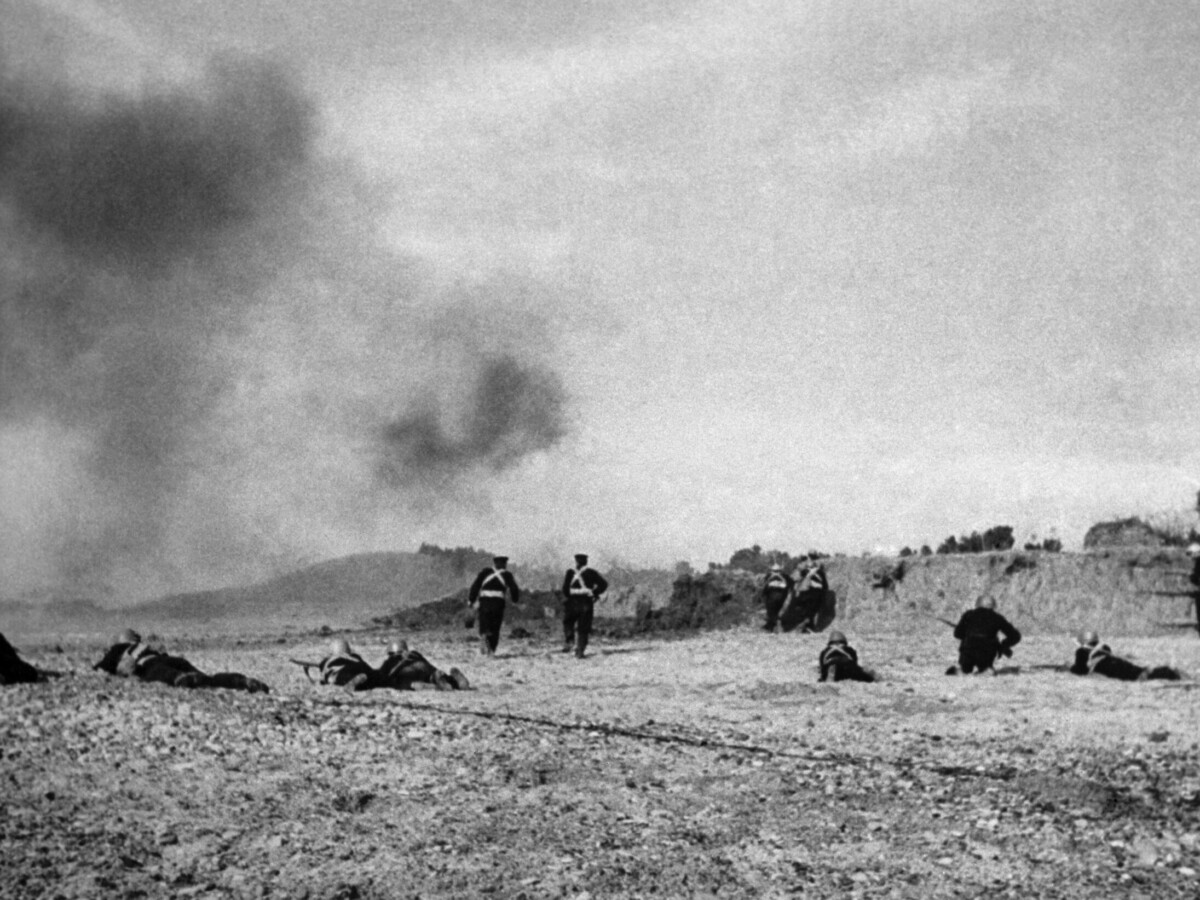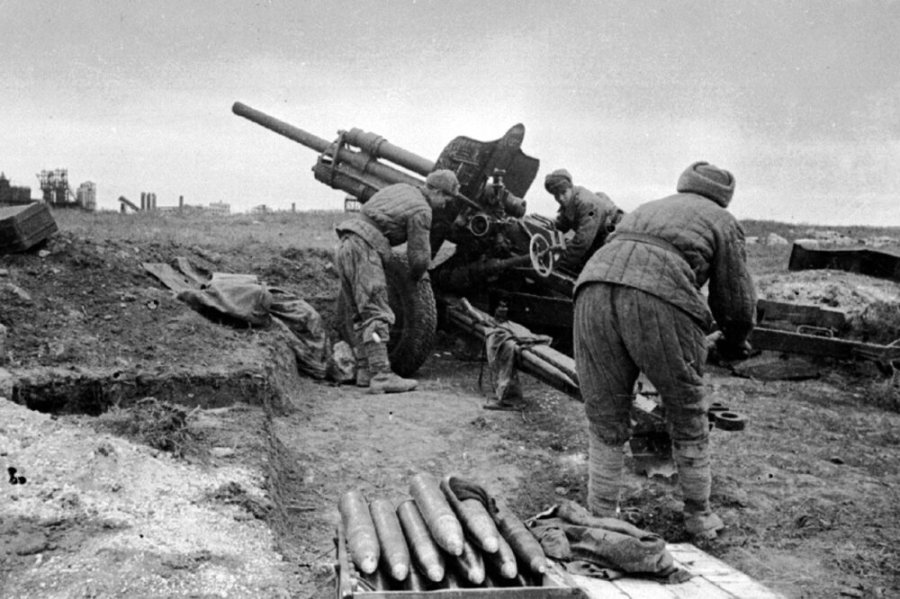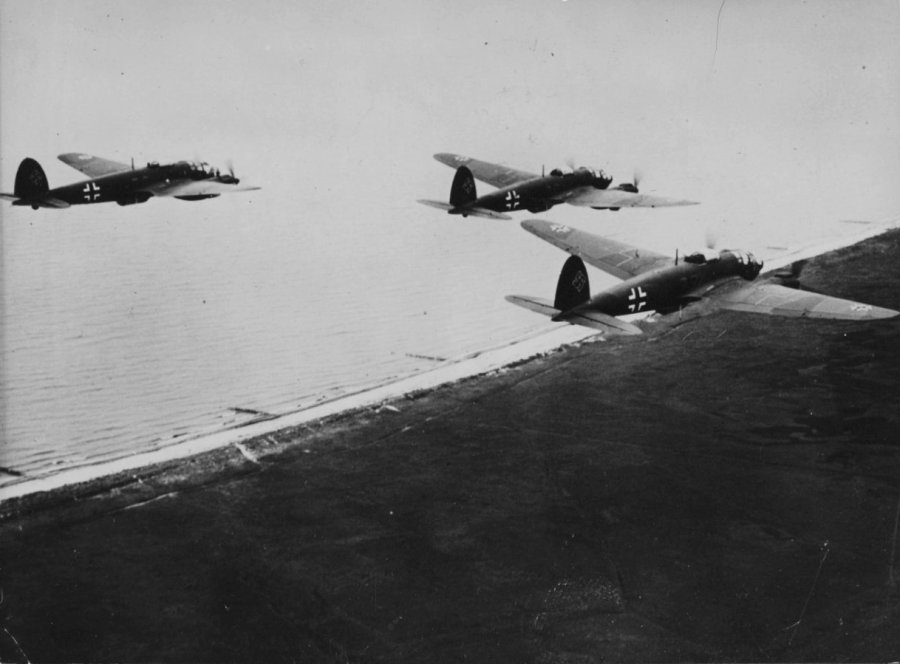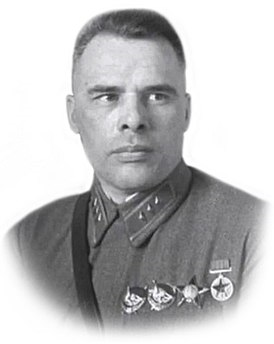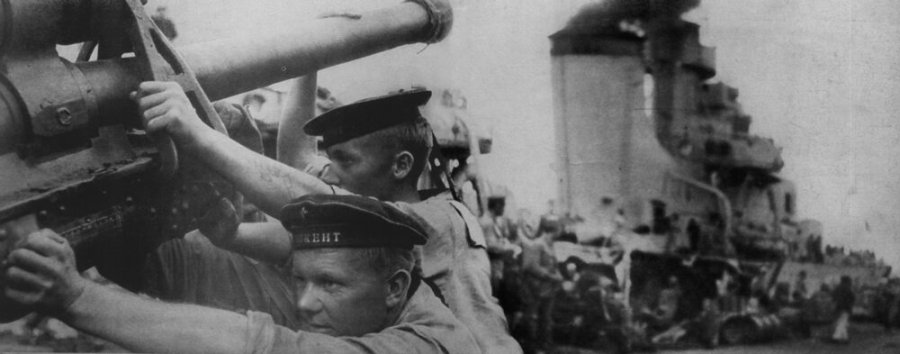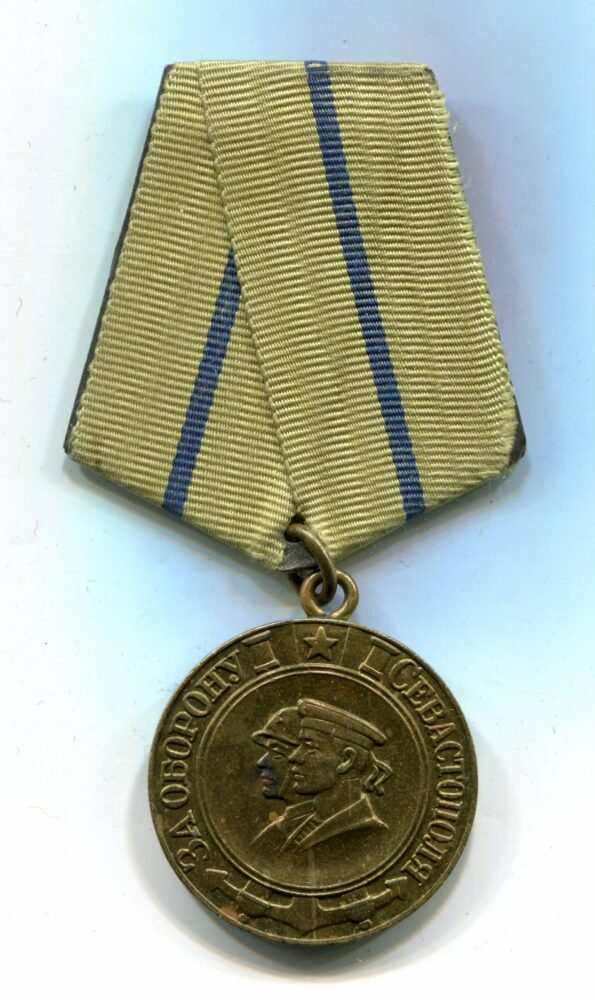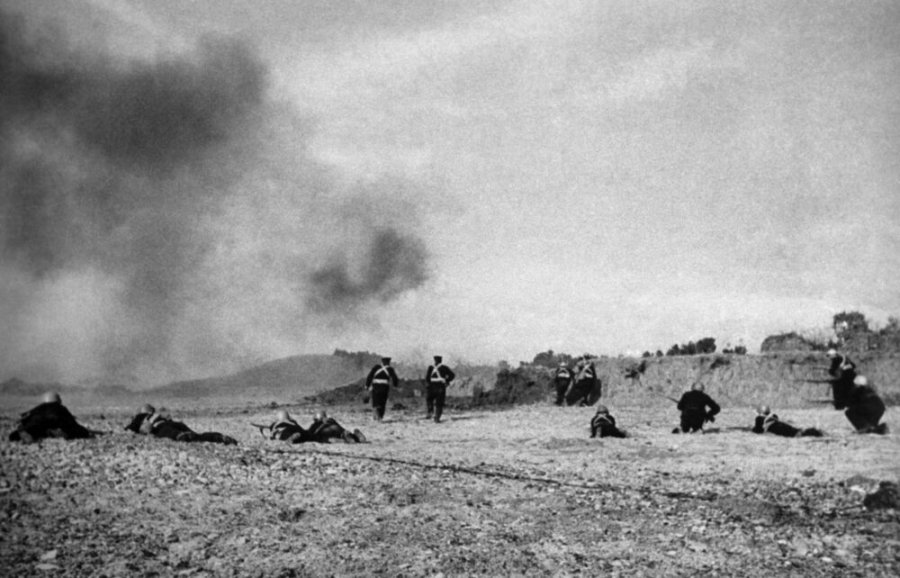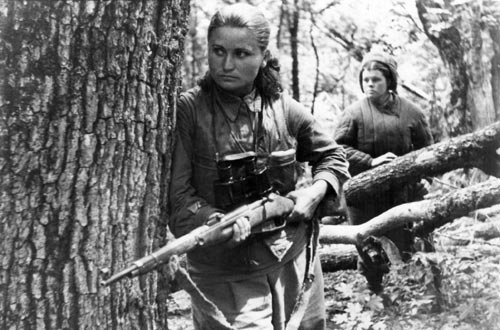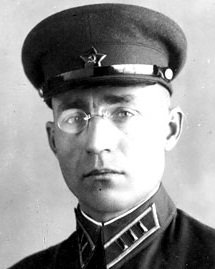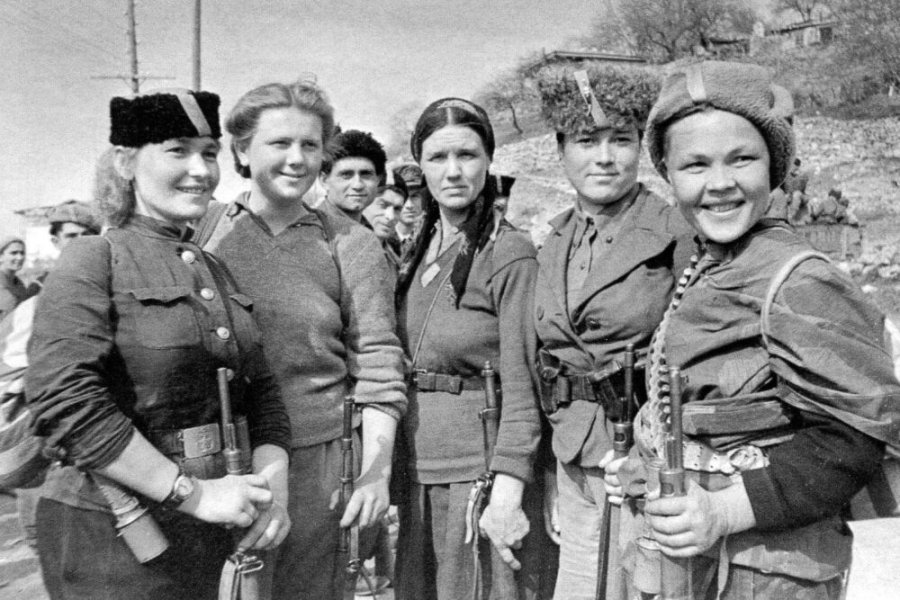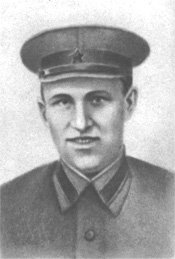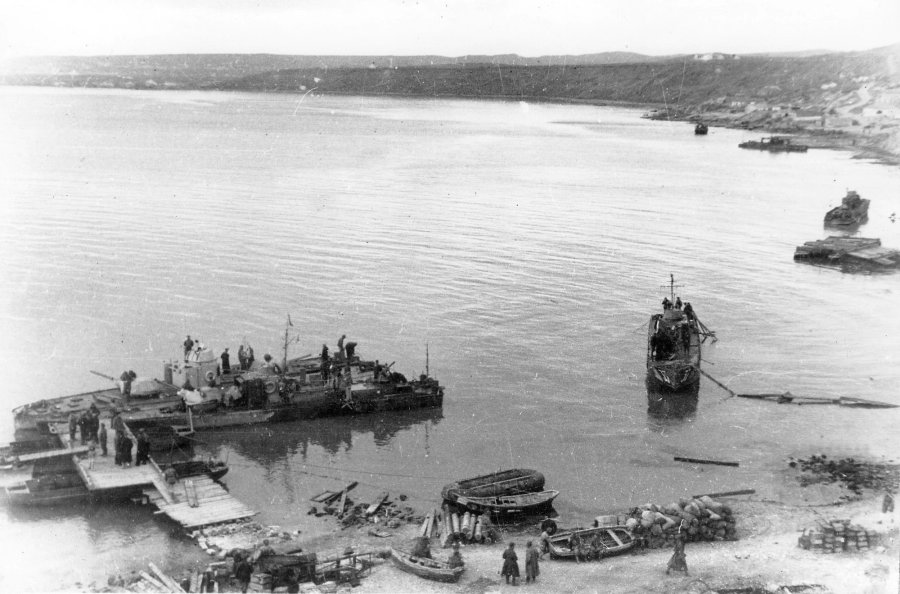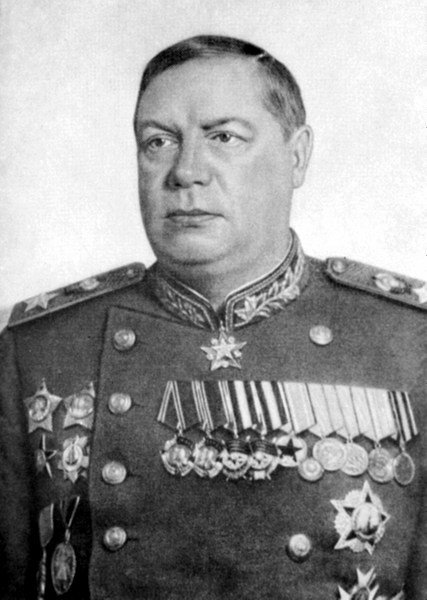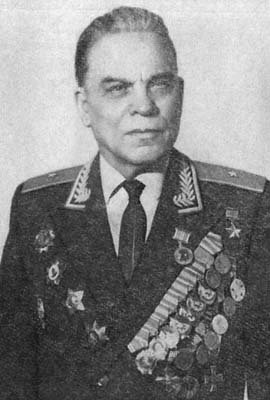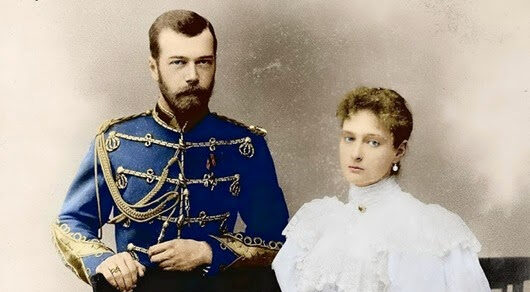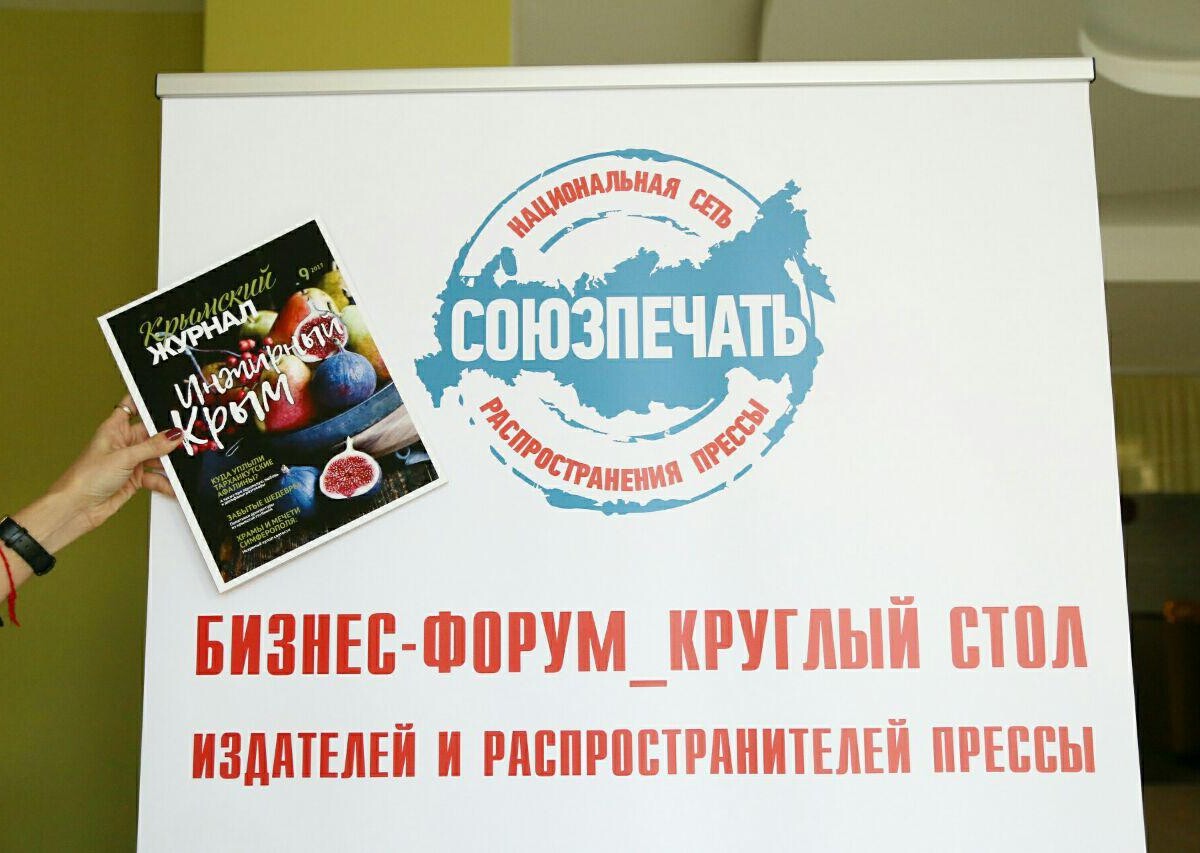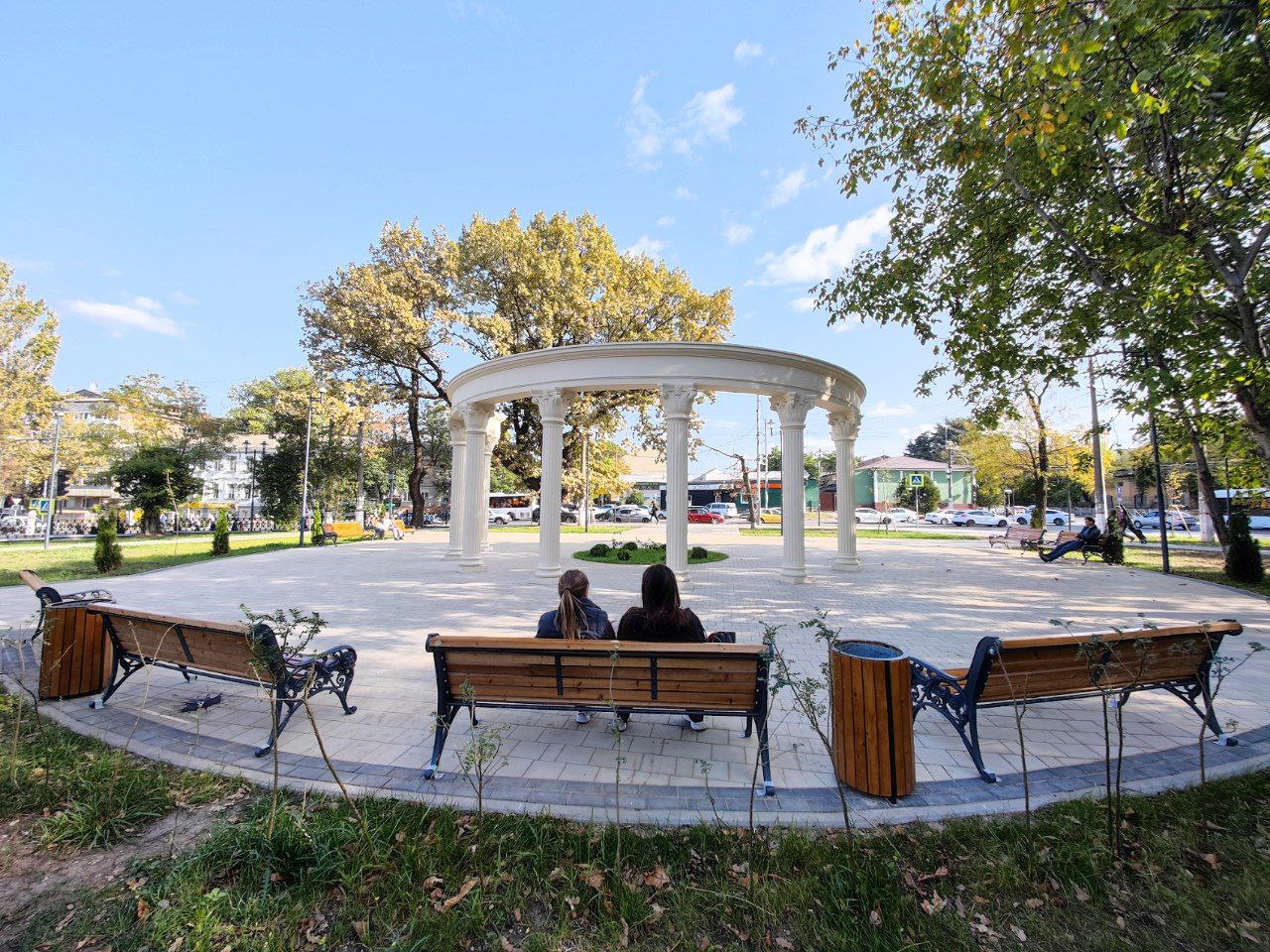The Crimean front line: chronicles of the combating peninsula from 1941 to 1944.
The beginning of Great Patriotic War in Crimea was quite the same as it was in large and small cities of the Soviet Union — the peninsula faced with the air strikes. And if residents living deep inside of the peninsula found out about it via the radio on the following day, then Sevastopol was the first city that met the upcoming war…
Outbreak of war. 22 June 1941
The radar station of the “Molotov” cruiser detected the German bombing planes approaching the main base of the Black Sea Fleet at 2:35 a.m. The fact sheet reached the desk of the Fleet Commander-in-Chief at 2:56 a.m. In few minutes, the hostile aircrafts were already flying up to Sevastopol.
The warships and anti-aircraft weapons were ready to make a retaliation strike. Then at 3:06 a.m., the Chief of the Staff of the Black Sea Fleet and Rear Admiral Ivan Yeliseev gave the order to open fire on the fascist planes violated the airspace of the USSR.
Germans were eager to block the fleet via dropping bottom non-contact mines. First victims of the war had emerged at 3:48 a.m. One of the shells landed on a residential block 12 minutes before the announcement about the outbreak of military activities was officially declared — about 20 of people were killed and 100 ones were injured.
The gun crews of the anti-aircraft batteries opened fire. We may say with certainty that the first shots of the Great Patriotic War rang out at the Crimean land. Soon, the roar of the cannons was heard along the entire front from the Barents Sea to the Black Sea. The sounds of gunfire were started and continued 1418 days.
Bloody year of 1941. Defense of Crimea and Sevastopol
The operation on seizing the peninsula was also a part of the “Barbarossa” plan, which implied the rapid offensive of the Hitler’s troops on the USSR and finishing the war in the autumn of 1941. The great importance was attached to Crimea: after the annexation of Crimea, fascist Germany could get access to the Caucasus, where the Soviet oil reserves were located at. Thus, the Red Army command aspired to hold Crimea at any price, as it was the important bridgehead for the Soviet aviation: taking off from the peninsula, the bombing planes carried out attacks on Romania and destroyed hostile fuel reserves.
The occupation of Crimea was possible only through the Isthmus of Perekop. The peninsula was defended by the 51st Independent Army under the command of the Colonel General Fyodor Kuznetsov.
Two rifle divisions covered the Arabat Spit, Chonhar Peninsula and Perekop. The 106th Guards Rifle Division protected the southern shore of the Sivash lake. The other four divisions guarded the sea coast. The 271st Rifle Division and cavalry units had a task to prevent the landing of the hostile troops.
The 11th Army of Nazi Germany under the command of Erich von Manstein was sent on the offensive. There were more than 200 thousand of soldiers and almost 2000 of cannons in its ranks. The Nazi troops were supported by more than 600 aircrafts. The advanced units of the hostile army approached the peninsula on 12 September 1941. During the fierce battles, the German troops could break through the Isthmus of Perekop. The Soviet army troops withdrew to the Ishun positions.
The hostile offensive on the Ishun positions started on 18 October. The Soviet troops were offering the stubborn resistance without regard to enemy’s superiority in manpower, equipment and aviation. As a result of five days of fighting, the units of the Red Army had to retreat deep into the peninsula. The enemies received fresh reinforcements and could press the success on 26 October. Soon, center of fighting shifted to Sevastopol.
The defense of the city continued 250 days. Courageously defending the city, the Soviet troops could contain considerable enemy forces for a long period of time. The existence of the fortified of the naval base in the enemy’s rear delayed the offensive of the Nazi troops on the Southern Front. The foe wasn’t able to exploit the success achieved near Kharkov in May 1942, as the significant part of German aircrafts got stuck near Sevastopol. The invading army took so many casualties, thus it needed not less than a month and half to restore its fighting capacities.
The 46 defenders of the city were awarded the title Hero of the Soviet Union. In 1942, the Soviet authority instituted the award called the medal “For the Defense of Sevastopol” that had been among the first awards of the Great Patriotic War. More than 50 thousand of people were awarded by that medal. Sevastopol became the hero city in 1945.
Training year of 1942. Landing forces to Yevpatoriya and Feodosiya
The year of 1942 became one of the most tragic episodes of the war. However, the losses the Red Army and Fleet suffered were not in vain. The Soviet troops were developing their skills and commanders were gaining the control experience in the hard combat situation. Not for nothing, this period is called the “training” one among military historians. The special significance was given to the landing operations, whose aim was the rapid liberation of Crimea from enemy troops in the background of the counteroffensive near Moscow in the winter of 1941-1942.
The Kerch-Feodosiya Landing Operation carried out in December 1941 was one of the first naval landings of the World War II and remained the biggest one in number of the engaged troops. The landing on the Kerch peninsula was planned by the headquarters of the Black Sea Fleet and Transcaucasian Front since November 1941. The operation was supposed to be implemented in three different places: the landing on the northern coast of the peninsula was carried out by the Azov Naval Flotilla, the Black Sea Fleet landed on southern shore, the forces of Kerch Naval Base attacked in the Kerch Strait. The units of the 51st and 44th armies participated in the operation.
The landing operation turned out to be a real surprise for the Germans. The Soviet assault forces landed in Feodosiya on 29 December radically changed the situation within the Kerch peninsula. The tide in the fight for Kamysh-Burun turned in the evening on 28 December, when the landing of the squad of the Black Sea Fleet was started there, though it had been planned to land the squad on the south-eastern coast of the Kerch peninsula previously. From that moment, the accumulation of the Red Army’s forcers was implemented faster than the Germans could do the same.
The following days, the units of the Red Army successfully started to advance deep inside of the peninsula. But unfortunately, the Soviet troops were unable to build the progress for different reasons, that’s why our soldiers had to be evacuated from Crimea in few months.
On 2 January 1942, the Headquarters of the Supreme High Command approved the operation plan implying the landing of several more amphibious assault forces. To land in Yevpatoriya, it was decided to form the squad consisted of the boats of the warships of the Black Sea Fleet under the command of the Second Rank Captain N.V. Buslayev and Regimental Commissar A.S. Boyko. The marines landed on the partly ruined berths of the port and began advancing into the city. They had seized the southern part of Yevpatoriya by the morning. On the Manstein’s order, the infantry units, reinforced by the artillery power were sent to fight against the Soviet landing forces. The forces were unequal. Without having support, the marines were resisting one more day and after that they left the city.
The German troops took on the offensive against the troops of the Crimean Front on 8 May 1942 and enemies had broken trough to Kerch on 14 May and captured the city on 16 May. However, street battles continued in some places of the city until 19 May. The command of the Red Army took a decision to leave Kerch again.
From 14 to 20 May, the authorities were able to evacuate about 120 thousand of citizens from the Kerch peninsula. The part of the Soviet troops within the joint team under the command of the Сolonel Pavel Yagunov took refuge in the Adzhimushkay Quarries, where soldiers fought heroically against the troops of the Third Reich from May to October 1942 and suffered of thirst, chemical attacks, hunger staying in cold and humidity.
The fascists deployed the violent terror in Kerch: 15 thousand of prisoners of war were killed in the city and its outskirts, 14 thousand of peaceful habitants died, more than 14 thousand of residents of Kerch were taken to Germany for forced labor. The crimes committed by the Nazi troops were so bloodcurdling that materials on those crimes appeared at the Nuremberg Trials.
Partisan movement
After finding themselves in the occupation, Crimeans didn’t stop resisting. On the contrary, the movement only gained steam in adverse conditions. Notwithstanding the repressions, the hostiles couldn’t feel safe in any part of Crimea.
The statistics shows the effectiveness of the partisan movement.
In sum, 80 partisan groups (more than 12500 of warriors) and 202 clandestine organizations and squads (more than 2500 of people) acted within the Crimean peninsula. During the period from November 1941 to 16 April 1944, the Crimean partisans killed 29383 of hostile soldiers and policemen and captured 3872 of enemies; set 212 ambushes, arranged 81 subversive activities on the railway, attacked motor transport 770 times, destroyed and put out of action 48 steam locomotives, 947 cars and platforms, 2 armored trains, 13 tanks, 3 armored cars, 211cannons, 1940 cars, 83 tractor units, 112,8 km of telephone cable and 6000 km of electric power transmission lines; seized 201 cars, 40 tractors, 2627 horses, 542 carriages, 17 cannons, 250 machine guns, 254 assault rifles, 5415 rifles, ammunition and other military properties. 1500 participants of the partisan movement were awarded with orders and medals.
Liberation. Opening gates to Crimea
As a rule, when it comes to the liberation of Crimea, historians remember the events of 1944. Nevertheless, the Red Army started “knocking on the doors” of the occupied peninsula further back and even tried to drive fascists out of Crimea with assistance of the powerful armored fist.
On 1 November 1943, the 19th Tank Corps of the Soviet Union together with the cavalry team launched an attack on the Turkish Wall. The German command organized the counterattack on the night of 2 November. The stubborn fight lasted the whole day. Having struck from flanks, the Hitler’s soldiers seized the Turkish Wall again. Anyway, the Soviet troops could hold the bridgehead to the south of the rampart 3,5 km wide and up to 4 km depth. It will play a major role in the liberation of Crimea in five months.
Kerch-Eltigen Operation
In the fall of 1943, the troops of the 18th Army had a task to capture the bridgehead near the fishing village Eltigen, expand the bridgehead and advance deep into the Kerch peninsula cooperating with the 56th Army.
On the night of 1 November 1943, overcoming the strong storm and mine field, the warships of the Novorossiysk Naval Base moved to Eltigen. They had to cross the Kerch Strait in its widest part, where its width exceeded 16 km.
On the first night, more than 2500 warriors landed on the coast. The marines held the bridgehead despite the hostile superiority in both the manpower and equipment. As darkness fell, the ships delivered reinforcements.
The Soviet marines fought 36 days in the conditions of the naval blockade and under the constant enemy fire. Thanks to their perseverance, the units of the Separate Coastal Army could land and settle to the north-east of Kerch. The front was there five and a half months. 58 soldiers became Heroes of the Soviet Union. The powerful artillery and aviation preparation was started at 9:00 p.m. on 10 April 1944. The enemy positions came under hundreds of explosions and fires were burning. The advance groups of the Coastal Army went into the assault at 10:00 p.m. The fights were cruel. The city could be called a fortress fitted with the engineer constructions. These facilities didn’t help Germans… With the support of the tanks, the Soviet infantry drove the fascists out from the Mount Mithridat. The red banner was raised above the city. Kerch had belonged to the USSR by 4:00 a.m…
Crimean Offensive in 1944
The powerful artillery preparation continued 2,5 hours was started in the combat zone of the Ukrainian Front at 8:00 a.m. on 8 April. The part of the hostile fire means was destroyed. Nevertheless, as most of the cannons were hidden, so they came to life during the assault.
The Soviet troops attacked from the Turkish Wall towards Armyansk-Ishun by the forces of the 2nd Guards Army. The 51st Army, reinforced by the 32nd Tank Brigade and 22nd Guards Tank Corps, was advancing from Sivash towards Tomashevka — Novoalexandrovka. Only for the first two days of the slogging combats, out troops killed 5500 of hostile officers and soldiers, destroyed 44 tanks and 21 aircrafts, as well as seized the following war trophies: 91 cannons of different calibers, 54 mortars, 337 machine-guns, 2686 rifles and assault rifles. 1000 fascists were captured. The liberation of Crimea was started… the capital of Crimea Simferopol was liberated on 13 April.
Liberation of Sevastopol
In the second half of April 1944, the Soviet troops began moving to Sevastopol from different directions. The liberation of the peninsula was entering the decisive phase. Though, the enemies could stop the offensive at the approaches to the city. It was obvious that the battle for the main base of the Black Sea Fleet would be hard. Our troops were accumulating forces for another attack during several days, which was called the final one by the Lieutenant-General Fyodor Tolbukhin.
The attack was started on 23 April and lasted for 48 hours. It was decided to outflank the Sapun Ridge, as the frontal assault was rather risky. The direction of the main attack fell on the Kadykovka and spur of the Gornaya Hill, which is located above the valley of the modern state farm “Zolotaya Balka”. Two dominating hills Gornaya and Sapun Ridge became the key ones during the defense and assault of the city.
Several divisions, including the 89th Rifle Taman Division of the Red Banner Order of the Red Star Armenian Division and 414th Rifle Anapa of the Red Banner Georgian Division were sent for capturing the Gornaya Hill. In such a way, two national divisions, created in the Caucasus became the striking force, which had to drive fascists out of Sevastopol.
On 9 May, the soldiers of the 318th Mountain Rifle Division under the command of the Hero of the Soviet Union Colonel Vasiliy Gladkov seized the Gornaya Hill.
The last unit that was smashed by the Soviet troops was the 336th German March Battalion, which was delivered by the planes from Constantsa the day before. At the end of the day, the Hitler’s troops began giving up their positions in the main direction. It was the victory that predetermined the outcome of the Crimean Offensive. One after another, the red assault flags of the winners were being raised above the Sapun Ridge.
The Crimean Offensive was ended with defeat of the enemies.
Reference: Crimean Magazine

